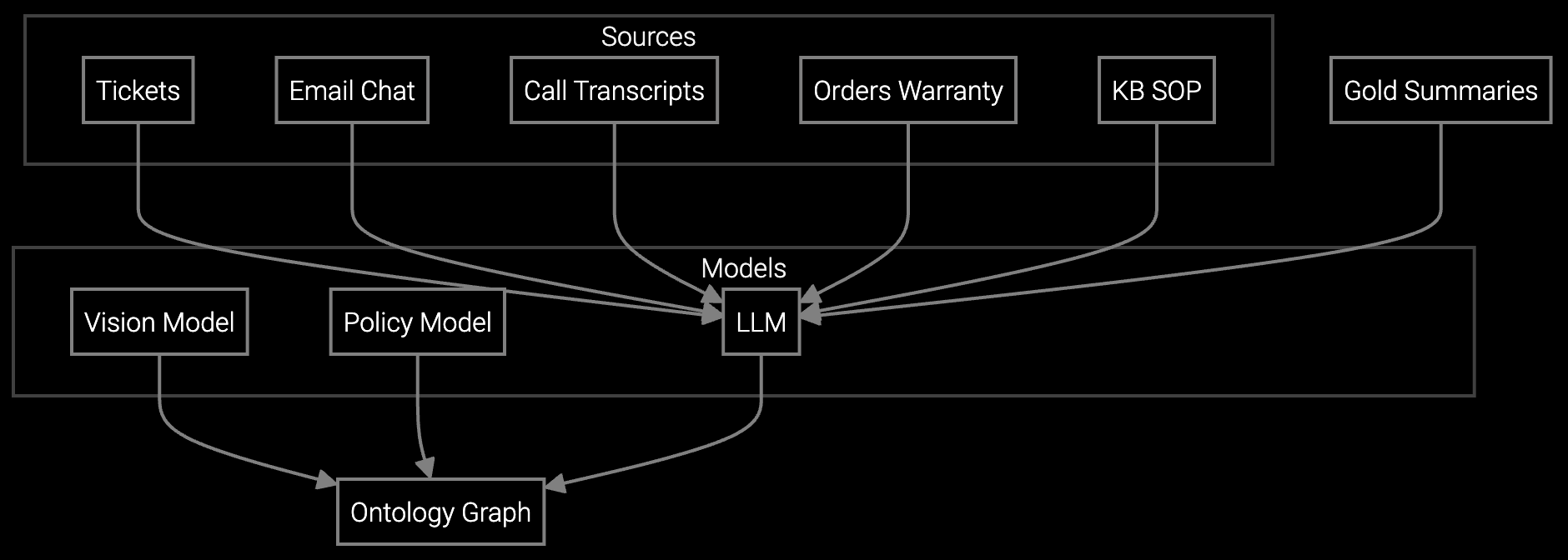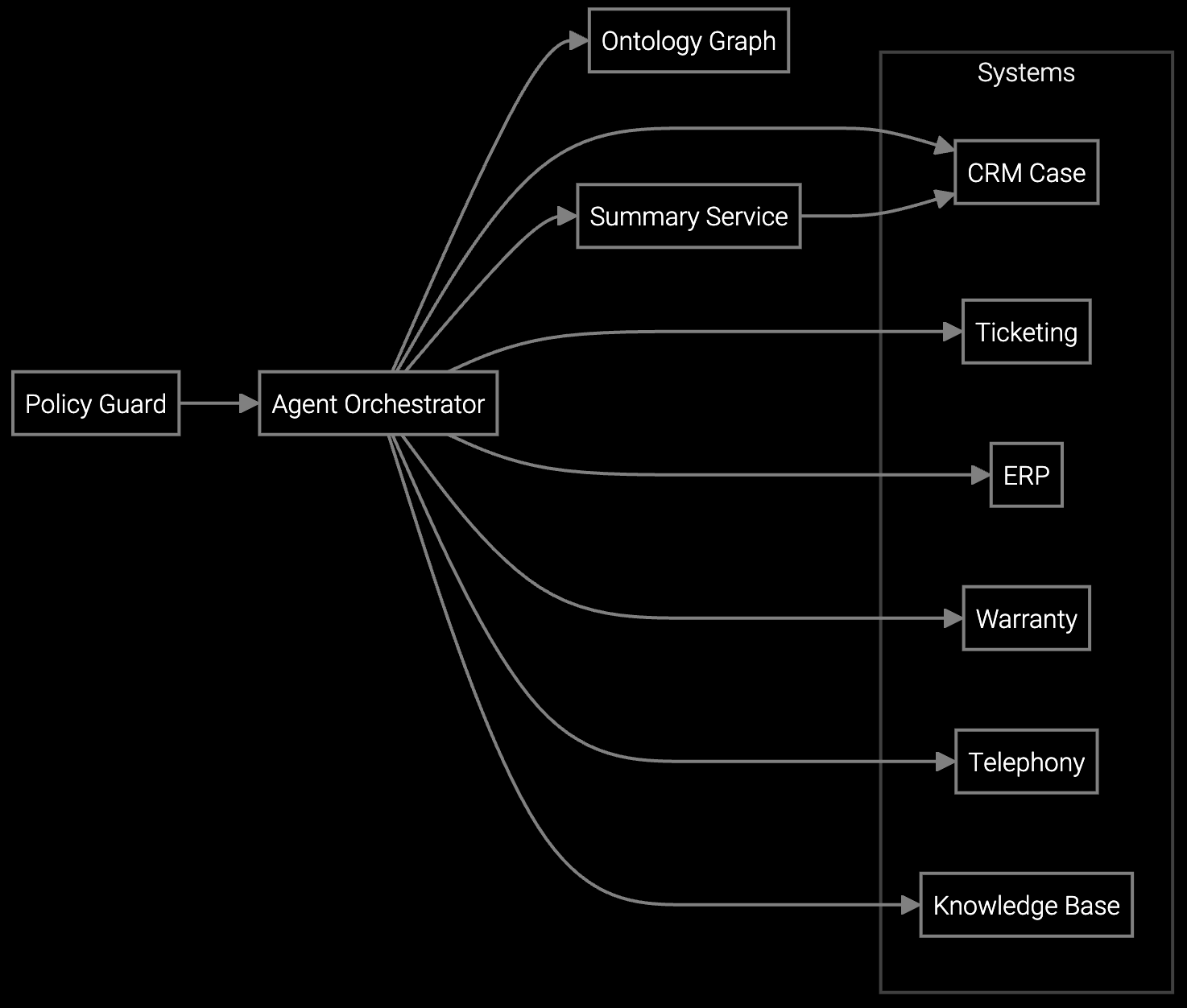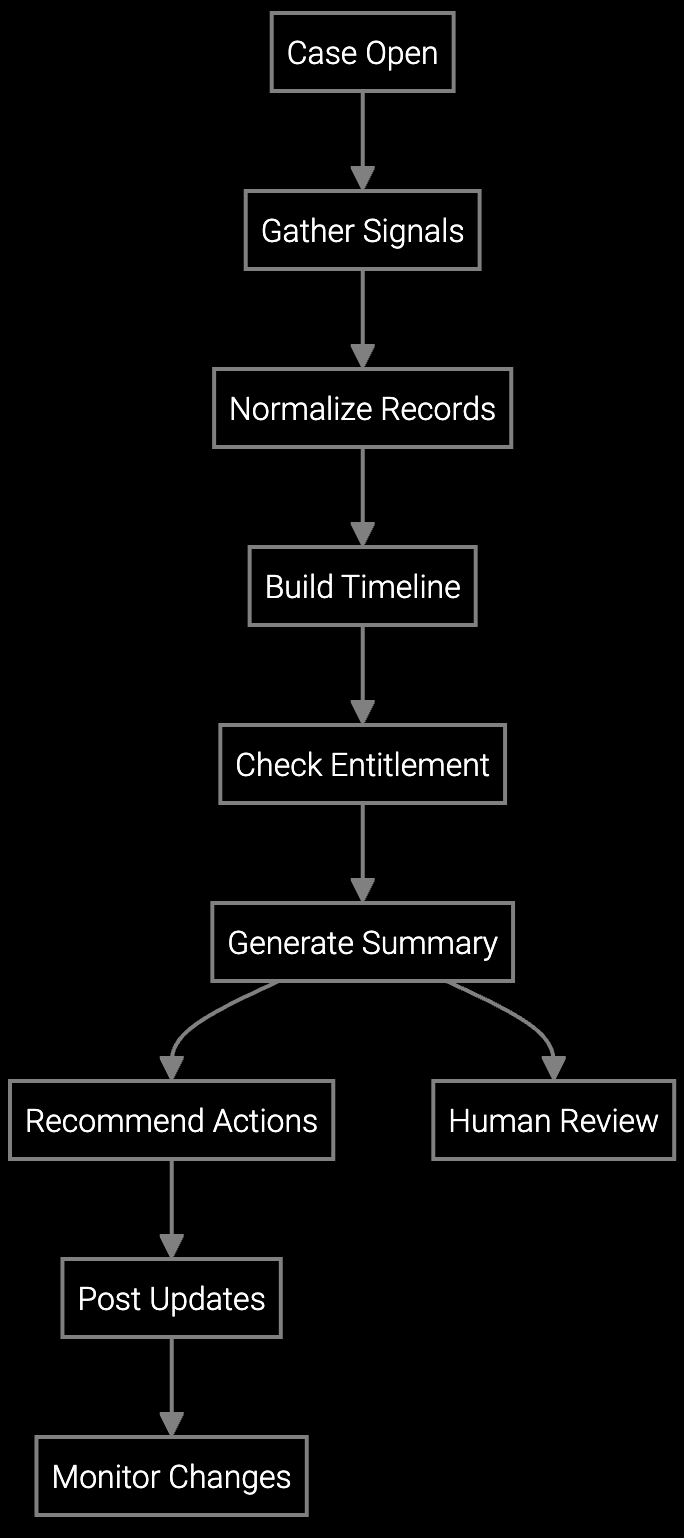Customer Case Summarization
AI-powered case summarization delivers source-cited context in under 10 seconds, reducing handling time by 22% and improving first contact resolution by 11%.
Challenge
Agents in contact centers must piece together customer context from CRM, ticketing, email and chat, call recordings, orders, and warranty systems. This research takes 5–10 minutes per interaction, creates inconsistent answers, and drives unnecessary escalations. New hires take longer to find entitlements and prior commitments, increasing handling time and lowering first contact resolution.
The objective: deliver a source‑cited case summary in ≤10 seconds for ≥80% of cases, cut average handling time by ≥20 percent, and improve first contact resolution by ≥10 percent while maintaining policy and privacy compliance.
Solution: How AIP changed the operating model
Learning and setup
Powered by the Aftermarket Intelligence Platform, the agentic solution applied its vision, policy, and predictive models with LLM summarization and ontology‑driven reasoning. Training data came from historical tickets and notes, email and chat transcripts, call recordings and transcripts, ERP orders and warranty records, customer profiles, knowledge base articles, SOPs, and annotated gold‑standard summaries. The AI agent learned to recognize customer and case IDs, serial and asset IDs, model details, order and shipment numbers, warranty terms, channels and timestamps, intents and sentiment, failure codes, and attachments with citations.

Workflow orchestration
The AI agent reads a newly opened case or hotkey trigger, extracts identifiers, and determines the correct path: fetch CRM and ticket history, pull order and warranty status, retrieve call transcripts, and search the knowledge base. It navigates CRM cases, ERP and warranty modules, telephony, the knowledge base, and the ontology graph via APIs or Vision tools. Logic branches for policy or privacy risk, low confidence, or missing identifiers, ensuring citations and compliance at every step.

Execution and resolution
The agent aggregates, deduplicates, and enriches records; checks entitlement and prior commitments; classifies intent; extracts key facts; and generates a five‑bullet summary with a timeline, risk flags, and citations. It recommends next best actions such as send KB link, create parts order, schedule dispatch, or escalate, then updates CRM fields and tasks, redacts PII, logs confidence, and watches for changes to refresh the summary. Exceptions like ambiguous IDs, conflicting SLAs, or missing orders route to humans with full context.
